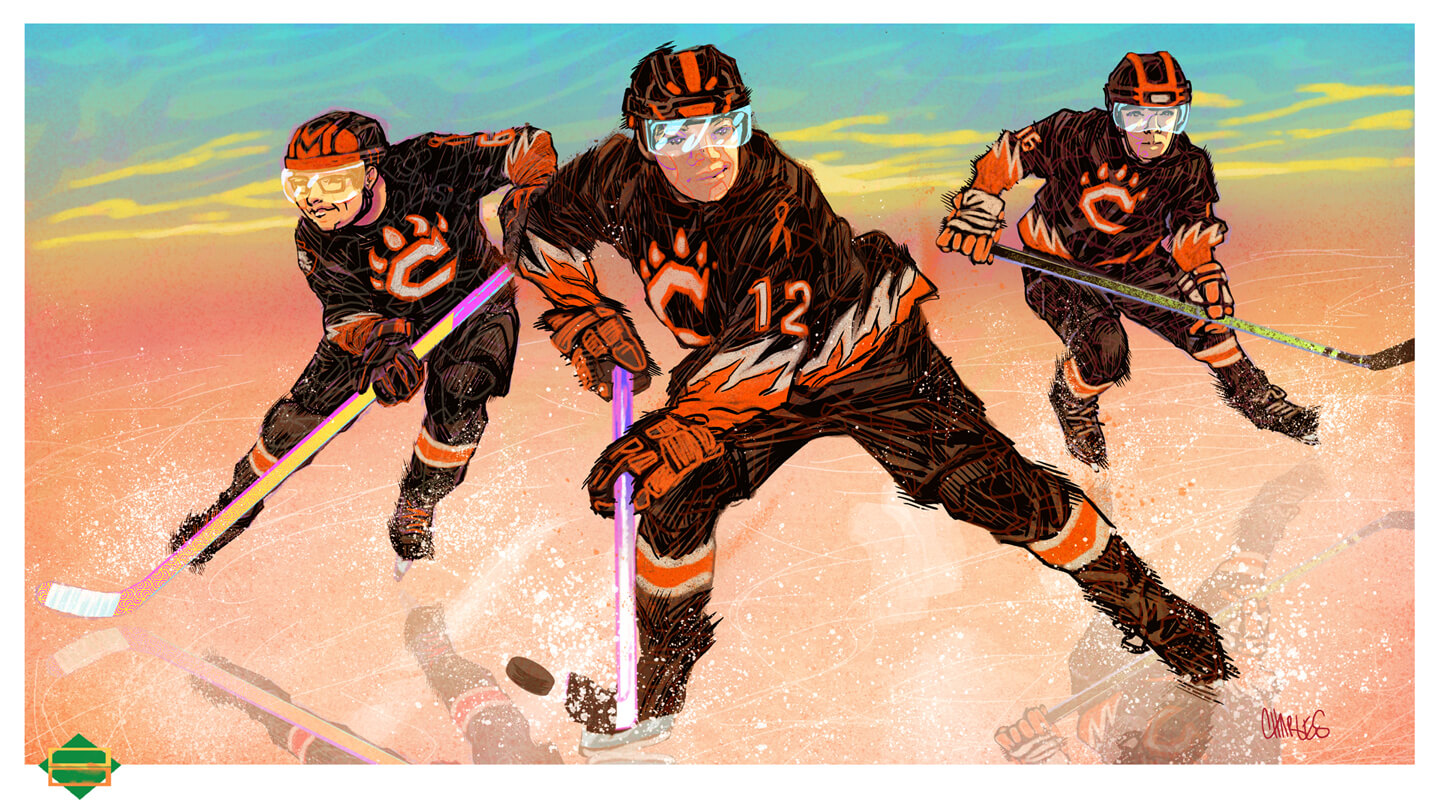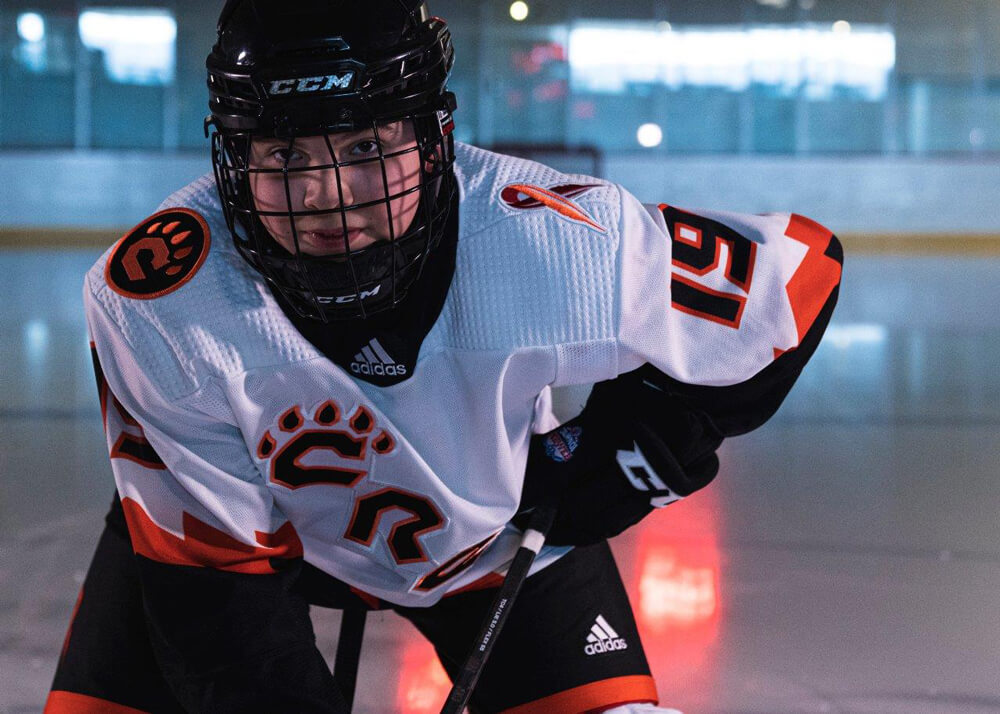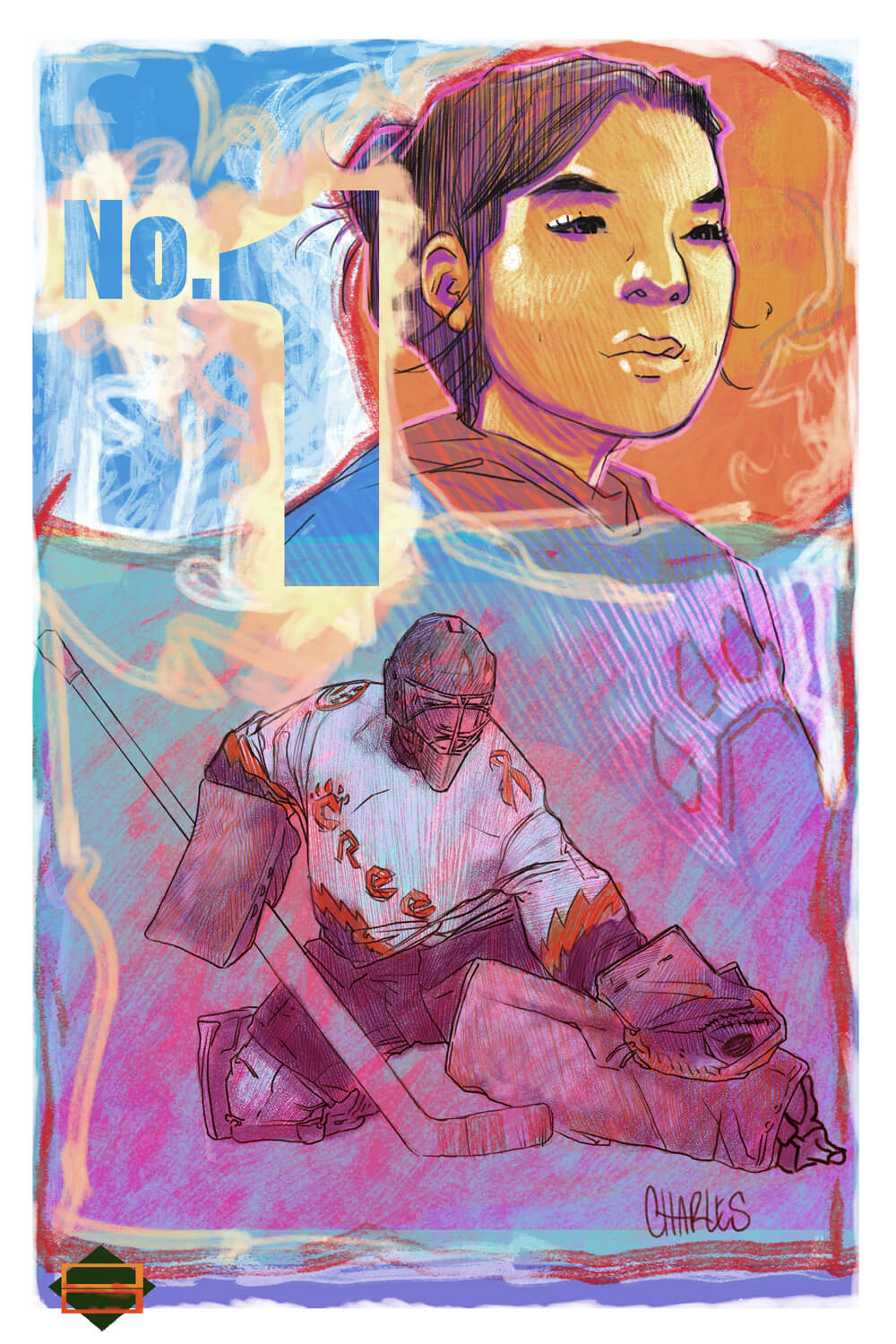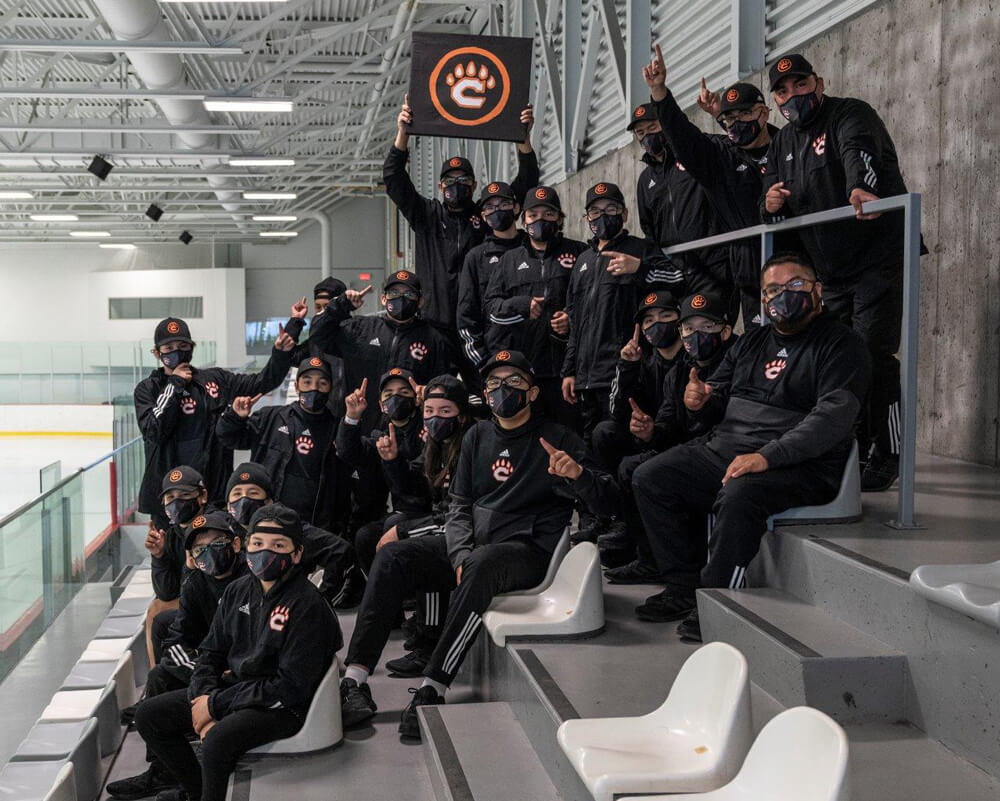C
harly Washipabano and his mother Dolores, Zane’s grandmother, watch the Bears skate down the handshake line.
“It’s great, not like my Quebec tournament,” he says. “We were living in Montreal back then —my mom was working as a nurse there and I was the only Native kid on the team. It was a good time but this is something really special, to be part of a Cree team.”
It’s mid-May, when minor-hockey seasons are usually long over, so it’s hardly a stretch for kids and their parents to look ahead to next fall. Some big decisions lie ahead. For the kids born in 2009 — Bentley Bobbish, Connor Napash and Leesha Grant among them — they’ll be graduating up a level, perhaps to the Cree Nations Bears’ bantam squad in Oujé-Bougoumou, or perhaps in points south, as Bobbish has talked about.
The Washipabanos have already had this conversation. “Zane’s a first-year player, a 2010 — he’s got another year of peewee,” Charly says. “I asked Zane the other day if he wanted to play AAA in Amos. He could go tryout this summer. I made it his choice completely — I’d support whatever he wanted. He’s looking to play at a higher level and go somewhere with his game. It’d be tough in Amos, French only in school there. No English — and no Cree, of course. He told me he wanted to go back to Waswanipi. There was no doubt in his mind. He’ll be able to wear the sweater with his name on his back in Cree for another winter. I’m sure that coming here has played a big part of it — a chance to be a leader. The program is going to grow when we can attract kids who’d play AAA elsewhere or keep young players who might look at that as where they want to go.
“This is just the start.”
They get to keep their sweaters.
In the second round, the Cree Nation Bears came from behind to defeat the Saint-Laurent Spartans 3-2 with Connor Naposh scoring the game-winner in the last minute of regulation. The Bears’ tournament ended with a 5-2 loss to the Aosta Gladiators. Aosta, an Italian team, won their next two games to claim the BB division’s championship.
This story features illustrations by Kyle Charles, an Edmonton-based Cree artist whose work has appeared in DC and Marvel publications.








